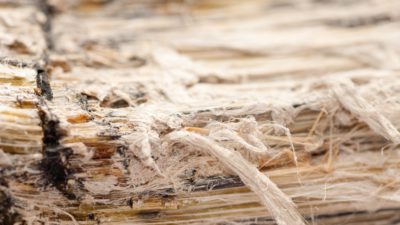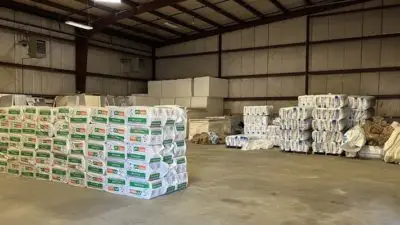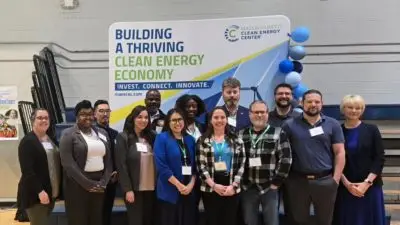Today forests cover approximately 30% of the Earth’s surface, but since 1990, about 420 million hectares of forests have been destroyed by human activity. For perspective, one hectare is about the size of two football fields.
Deforestation, or the removal of trees from land that is then converted to something other than a forest, has a negative impact on the climate, wildlife, ecosystems, and more.
So, why is deforestation happening and how can we help to stop it?
We’re rapidly losing trees
According to The New York Times, almost 47,000 square miles of forests were destroyed in 2019 alone. The Union of Concerned Scientists (UCS), says that beef, soy, palm oil, and wood products are the four biggest drivers of deforestation.
Forests are cleared for meat production
Beef is the deforestation driver with the biggest impact, according to the UCS.
According to Earth.org, beef is responsible for approximately 40% of deforestation around the world. It is estimated that almost 82,000 square miles of forests are destroyed annually to create pastures for livestock, 80% of which happens in the Amazon.
That’s right, it’s happening in the Amazon
Did you know that 95% of deforestation happens in tropical rainforests? According to the World Wildlife Fund (WWF), in 2019, trees were lost at a rate of 30 soccer field-sized areas/minute in the Amazon.
“One of the most shocking deforestation facts in recent years is that the Amazon, the world’s most biologically diverse ecosystem and important carbon sinks, is found to emit a greater amount of carbon dioxide than it is absorbing as a result of deforestation, wildfires and climate change.” -Earth.org
According to Earth.org, the Amazon emitted about a billion tons of CO2 every year between 2010-2018, which is about the same number of emissions that are released yearly in Japan, the world’s fifth-biggest polluter.
Palm oil is a major source of deforestation
Every hour 300 football fields worth of forests are being destroyed to make space for palm plantations, says Earth.org.
According to Business Wire, the palm oil market was valued at almost $37 billion in 2019 and is experiencing tremendous growth.
You’ll find palm oil in the ingredient lists of many products such as vegetable oil, biofuels, chocolate, soap, and shampoo! In fact, it’s in more than 2/3 of common food products. Live Science says it can be found in 50% of all grocery store items.
Forests are producing great amounts of CO2
It’s a fact that trees play an important role in capturing and storing excess CO2 and Live Science says that “tropical trees alone are estimated to provide about 23% of the climate mitigation that’s needed to offset climate change.”
While we know that forests produce oxygen and absorb CO2, the destruction of forests sends almost 5 billion tons of CO2 into the atmosphere annually. That’s almost 10% of yearly human emissions!
For example, according to Earth.org, NASA researchers found that increased deforestation in Borneo “contributed to the largest single-year global increase in carbon emissions in two millenniums, driving Indonesia up towards a leading source of carbon emissions.”
What can I do to help curb the loss of forest land?
The good news is that at the 26th annual United Nations Climate Change Conference (COP26), more than 100 countries (countries that make up 85% of the world’s forests) joined a pledge to stop and reverse deforestation.
You can also help protect our forests by planting a tree (today is Arbor Day!), using less paper products, eating less meat or adopting a plant-based diet, or buying wood products where the wood has been sustainably harvested.
Your everyday habits and conscious choices can help make our world a greener place to live for years to come! If you need assistance on improving the energy efficiency of your home, go here for more information about starting with a no-cost Home Energy Assessment.
Together, we can make a difference!
Resources:








